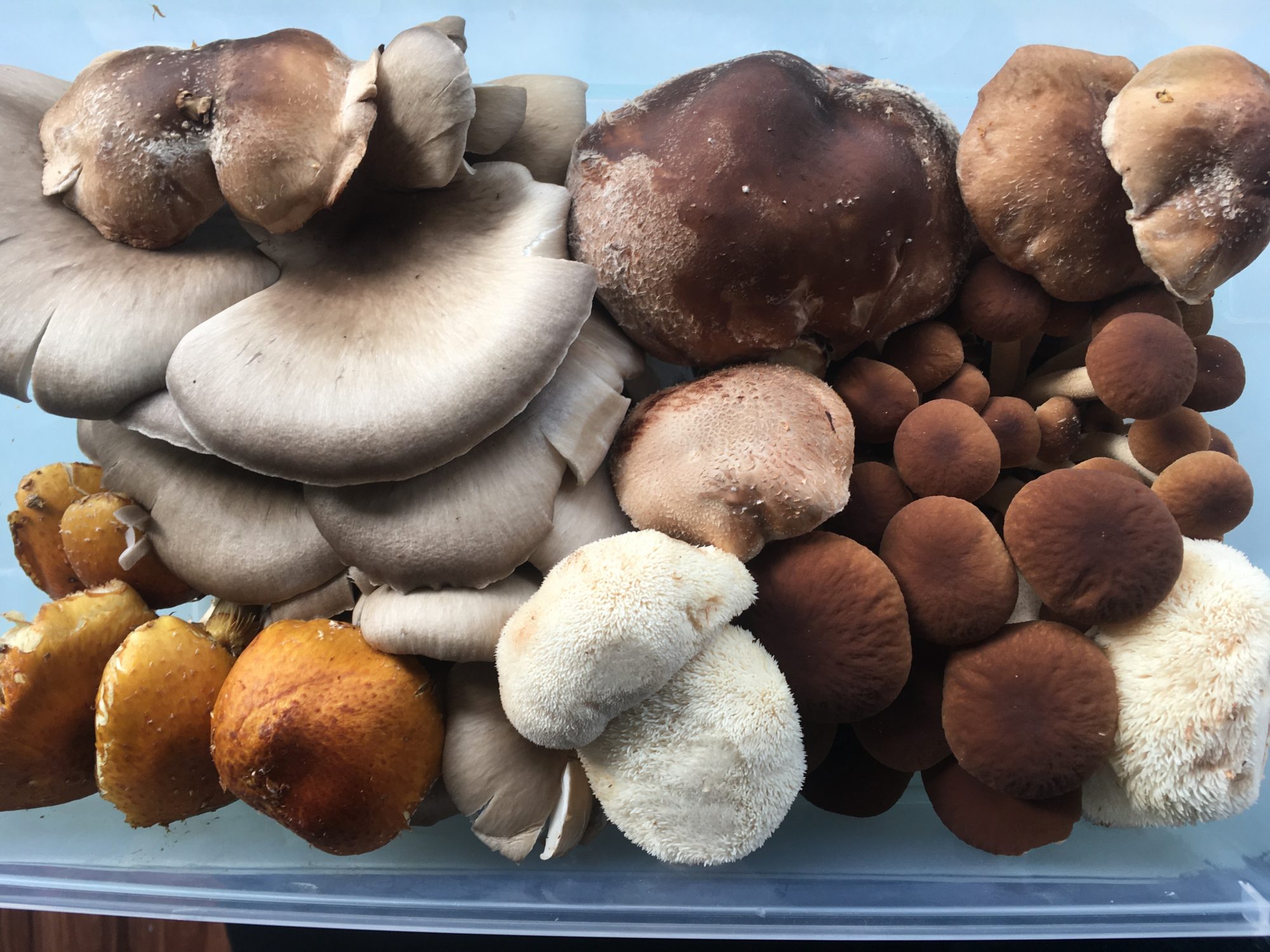Order your own kit today!
Order your own mushroom grow kit at ashbyfungi.square.site!

Ready to grow your own oyster mushrooms? Follow the instructions below to care for your new oyster grow kit.
- Place your new kit in the ideal location. Temperatures should be between 50-70 degrees fahrenheit and the kit should be protected from direct sun. However, no closets! Fungi don’t photosynthesize, but they do benefit from indirect natural light, and it can increase the vitamin D content of the mushrooms.
2. Depending on when your kit was made, it will take 5 days to two weeks to fully “colonize” – the term mushroom growers use to indicate that the mycelium has reached every corner of the substrate. Once that has happened, your kit is ready to be “birthed”, or prepared for the fruiting stage. You’ll see white mycelium extending all the way to the bottom of the container and the top will be a solid blanket of white (see pictures below).


3. Once your kit is ready, get a plastic bag (the kind produce comes in at the grocery store) and cut about 7 small x’s in it with scissors. This will promote air exchange. Then remove the lid of the kit and stick your bamboo skewers around the edge. Don’t stick them in too far – you want plenty of space for air exchange and for the mushrooms to grow.
4. Before you put the plastic bag over the top, spritz the inside with some water. It’s a good idea to do this daily, although your kit should still produce if you forget.
5. Stretch the plastic bag over the bamboo skewers and use a rubber band to keep it in place around the container.

6. Continue misting daily and observe the changes in the mycelium. You should start to see “pins” – the small beginnings of mushrooms – after about a week. Once the fruiting bodies start to form, you’re going to have to exercise a lot of self control not to pick them too early. You want them to get as big as possible! Wait until the mushroom is pale in color and the edges of the mushroom have started to uncurl.




7. When your mushroom cluster is finally ready to harvest, grasp firmly at the base and twist a bit to separate it from the mycelium. Then use kitchen scissors to cut off the bottom segment that still has coconut coir clinging to it. Now it’s time to eat! Check out ashbyfungi.com/recipes for suggestions of how to devour your delectable morsel.

You can keep your kit around to see if you’ll get a second “flush” – that is, another cluster of mushrooms. I would suggest raking a fork over the surface of the mycelium to disrupt it and stimulate pin production. Then spritz the inside of your bag and replace it on top. If you don’t see any evidence of more pins after 3-4 weeks, and/or if you start to see green mold forming, it’s time to compost your kit.
FAQs
- What’s the substrate made out of?
The substrate in our grow kits contains coconut coir, vermiculite, gypsum, and spawnmate. Oyster mushrooms usually grow on sawdust, or sometimes straw, but coconut coir is particularly resistant to contamination, that nemesis of home-based growers, so we find it delivers better results.
- What strain are my oyster mushrooms?
Your kit is either blue oyster or pink oyster.
- Do you offer grow kits with any other varieties?
Not at this time. Oysters are one of the most vigorous varieties of common edibles, and other strains are more prone to contamination. We want to make sure that you get results when you’ve spent time and money on one of our grow kits!

